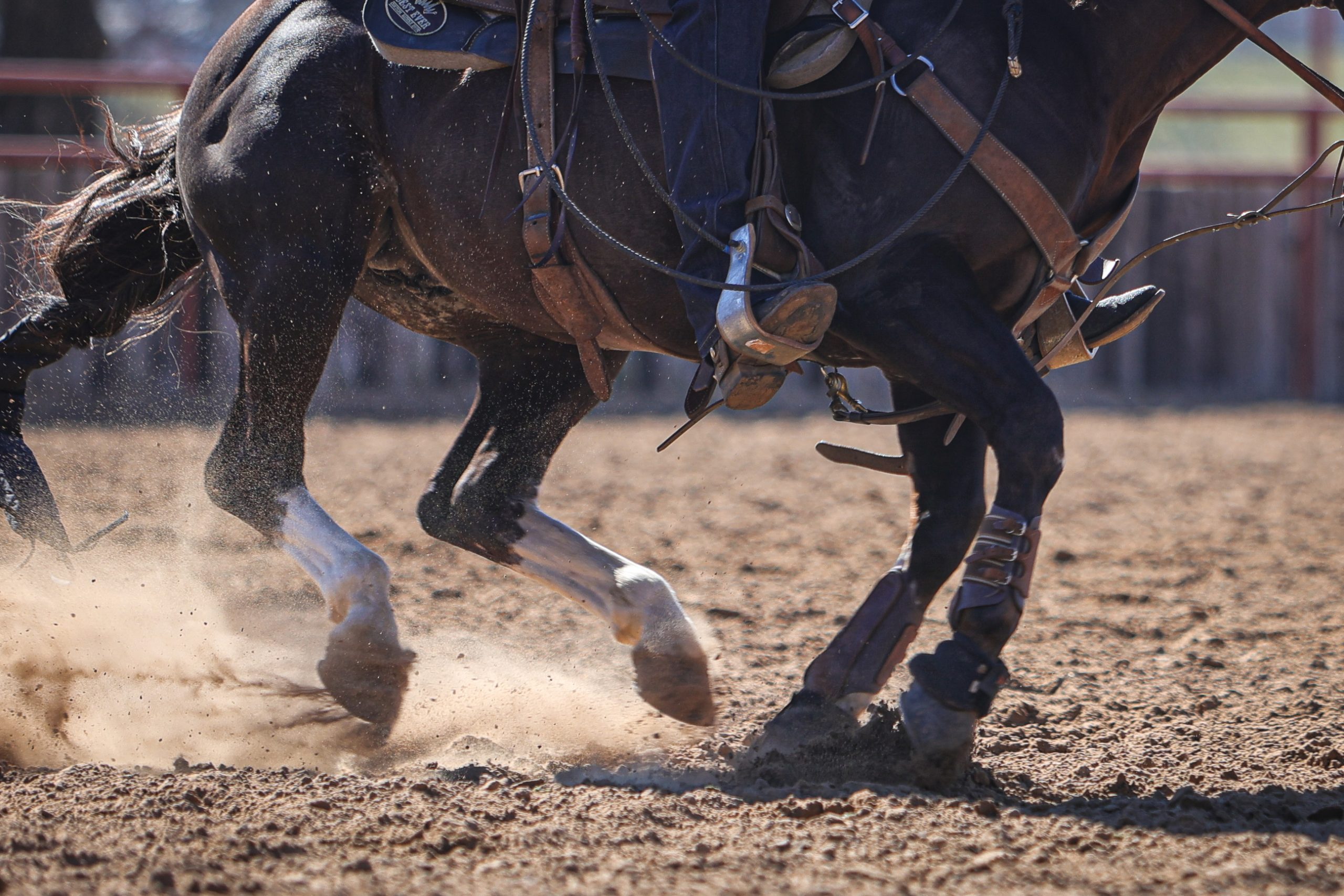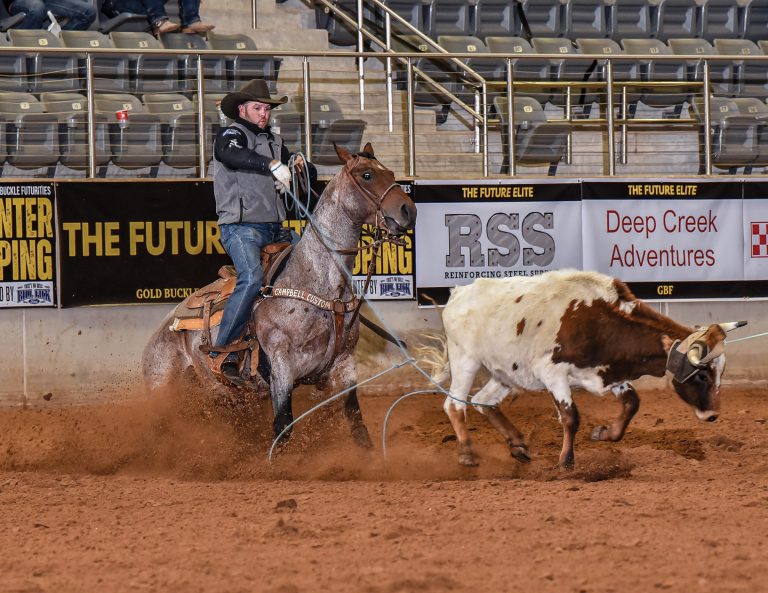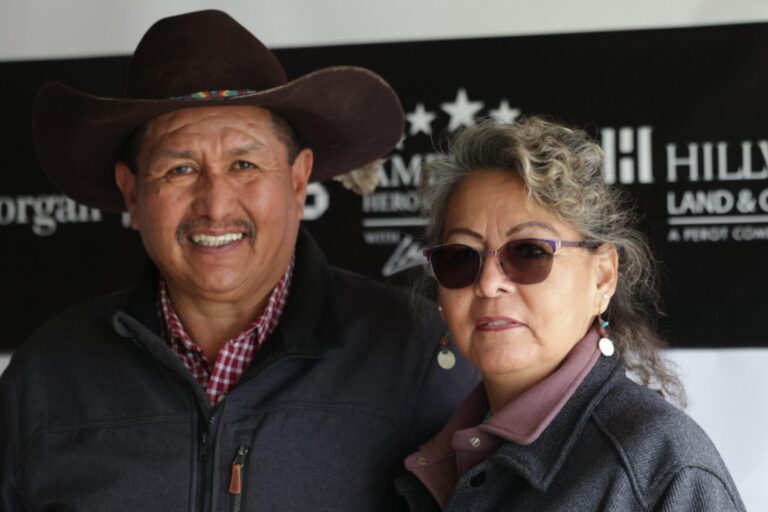It would be so easy to fix training issues that stem from physical problems if horses came with a play-by-play guide.
Hot in the box? Must be ulcers. Treat with GastroGard.
Head horse failing to pull? Hocks or stifles need treatment.
Heel horse quartering the stop? Hocks or stifles need treatment.
Horse bucking? Get a new saddle or pad.
Unfortunately, all four of these problems could have the same cause and treatment. Horses may have ulcers because they’re sore in the hocks or stifles because a bad saddle fit is causing them to not use their body properly.
“Everything in the body is intertwined,” says Dr. Joe Stricklin, a veterinarian and team roper from Greeley, Colorado. “It’s difficult to separate anything out and say this causes this, that causes that, or that’s how a horse is going to act when they have this.”
Since horses don’t come with a troubleshooting guide with clearly identified steps to a solution, here are some of the most common issues, their indicators and possible solutions.
Pain-Related Behaviors in Rope Horses
There are a handful of factors that are common between head and heel horses as far as what to look for when they’re not quite working right.
“One of the biggest things is knowing when to be concerned,” says 2023 World Champion Header Tyler Wade of Terrell, Texas. “If you have a horse that’s normally pleasing and all of a sudden they’re not, it’s usually a vet-related issue.”
West Texas Equine’s Randy Lewis, a veterinarian and team roper from Abilene, Texas, says it is mostly a matter of listening to the horse.
“It’s not just finishing a run and going, ‘OK, let’s go run another one,’” he says. “It’s easy in a practice session or even at a jackpot to solely be concentrating on your roping, how you’re catching and what your times are, so it’s easy to overlook the things that a horse is trying to tell you.”
Common signs to watch for from horses on both ends are bad box behavior, struggling to run to catch or make the corner and failing to use their hind end properly, whether that’s logging the steer across the pen and facing for a head horse or quartering stop or kicking out after a run for heel horses.
“A classic thing with head horses that are sore is they don’t want to take a hold of steers,” he explains. “When the rope goes on, instead of staying in the roper’s hand and waiting for the cue to take a hold, they’ll lunge out in front of the steer to keep from having to drive off the hind end. They end up using the front end to pull themselves across the arena instead of using their hind end.”
Another thing to watch for with both head and heel horses is their leads.
“A finished head horse should know how to take a hold of a steer in its left lead,” he says. “They may run to the steer in the right lead because they happened to break that way, but when they stay in that lead when they’ve taken a hold of the steer that’s usually an indication that something is sore.
“A heel horse that’s sore will want to stay in the right lead coming around the corner.”
A heel horse that’s not stopping correctly may also be sore.
“When they get ready to take the jerk of the run, they’ll start quartering sideways to take the jerk as opposed to taking it directly in front of them. After the run and you’ve undallied, if they kick out or pick up a foot really high, like something has stung them, those horses are typically sore somewhere.”
The tail will also tell a story, says Stricklin.
“When these horses start popping their tails, that’s an indication they’ve got something bothering them,” he says. “I’ve had people come in wanting something to relax the tail, but actually the tail is telling them that they’re hurting somewhere.”
Another subtle sign that Wade watches for is behavior when saddling or tightening cinches.
“If a horse pins his ears or gets a hump in his back when being saddled or having the cinch tightened, it might be a sign of pain,” he says. “Some horses are just that way, but others might be uncomfortable.”
Some signs aren’t so subtle, like bucking, adds Lewis.
“The classic one is when a horse all of sudden starts bucking,” he says. “I’m not talking about the first one you run when they’re fresh. It might be the 10th run all of a sudden, he’s bucking.”
“One of the biggest things is knowing when to be concerned. If you have a horse that’s normally pleasing and all of a sudden, they’re not, it’s usually a vet-related issue.” —Tyler Wade
Benefit of the Doubt
Horsemanship experience is a huge factor in catching the subtle signs of soreness, says Dalton Pate, a veterinarian and team roper practicing at Mid-South Equine in Tioga, Texas.
“The Top 15 going to the NFR have expensive horses, and they know they have to take care of them because it’s their livelihood,” he says. “The high-level rider is more in tune with the little, tiny things versus those that don’t quite have the horsemanship skills yet. Sometimes they don’t know they need to come in until things get really bad.”
So how do you catch it before it gets bad?
For Wade, it’s giving his horses the benefit of the doubt before they go through intense tuning sessions.
“I do think before you get after them and ride them really hard, it’s better to take them to the vet and get them checked out to make sure nothing is wrong,” he says. “If I find out nothing is wrong with them, and they’re still not performing well, that’s when I’ll ride them harder. You want to make sure they’re not hurting. If they’re hurting, you don’t want to keep hammering on them. When the vet says they’re fine, that’s when it becomes a training issue, and we’ve got to fix it in a different way.”
For those unsure if their horse needs more training or a veterinarian, Wade suggests the old “Bute Test.” If a few days of pain medication makes the horse work better, it’s got a soreness issue.
“You might not notice a difference the first day, because they’re still anticipating, but by the third day, if they’re good, you know they’ve been hurting,” he says. “You need to get to the vet and fix what’s going on.”
It’s important to note that the pain medication is masking a problem, not fixing it. In some cases, it can make the problem worse, even though the horse feels better. It’s not a substitute for veterinary intervention.
The “Bute Test” isn’t 100% either as some medications are better than others at masking joint pain versus muscle pain. A veterinarian is still the best option.
“If they’re hurting, you don’t want to keep hammering on them. When the vet says they’re fine, that’s when it becomes a training issue, and we’ve got to fix it in a different way.” —Tyler Wade
Common Causes of Pain in Rope Horses

Arthritis
Hock and stifle joint arthritis is an occupational hazard of nearly every equine performance discipline, including team roping.
“Team roping horses aren’t unique from Western performance horses in general,” says Lewis. “Whether you’re talking about a calf horse, cutting horse or barrel horse, we’re asking them to perform off their hind end and use their hocks, stifles and hips.”
While hocks and stifles are generally considered the obvious offenders, it’s worth looking further,” says Stricklin.
“I see a lot of horses that the first thing that gets done is their hocks and stifles are injected. The horse still won’t be working right, and a lot of times, it’s the fetlocks, or the feet are too long, and you get some coffin joint pain in the front.”
The available treatments for problematic joints have vastly improved in recent years with the introduction of orthobiologics—substances that amplify the body’s own healing properties, and polyacrylamides—synthetic hydrogels used to improve lubrication within the joints, to the traditional battery of corticosteroids.
“The type of medication I’m going to put in a joint is going to vary according to the age of the horse, what’s going on in the joint and how quickly we need it to respond,” says Stricklin. “We have a lot more options than we had 10 years ago, and I think there’s a place for every one of them.”
The newer treatments have more healing properties but often take a little longer to work. They’re also more expensive, but if they do a better job of repairing, they may be needed less often, notes Pate.
“We have these alternatives that aren’t so taxing on the cartilage,” Pate says. “When you’re putting steroids into a joint every six months to a year from the time a horse is 5, by the time it’s 17 or 18, you’re going to see them diminish and not respond as well. You’ve got to find ways over the lifetime of that horse to preserve the health of their joints.”
Back pain
Another common problem area is the back, notes Lewis.
“With joints, it’s kind of nagging pain that affects the way they work, but they still try. Horses that get sore in their back, it’s a different kind of pain. It’s like being stabbed in the back with an icepick. It’s a sharper pain that you can’t get away from. Those horses go from trying to throwing you the finger!”
Poor saddle fit, broken or damaged trees and even kissing spines—a painful disorder where the dorsal spinous process, the tall top portion of the vertebrae, are compressing and grating against each other—are just a few of the causes of back pain.
Treatment varies by disorder, ranging from simple muscle relaxants and injections to shockwave therapy and surgery in the case of kissing spines.
Ulcers
Ulcers are another very common problem. They can be a primary issue stemming from stress—a pastured horse that’s in a stall for several days without full-time access to hay—to a secondary one with a multitude of soundness issues.
“Stomach ulcers are a huge issue, especially in horses that are traveling a lot,” Stricklin says.
Although veterinarians will debate over the efficacy of compounded ulcer treatments available, most will agree that GastroGard is the gold standard. Which product to use often depends on the suspected condition—stomach ulcers versus hindgut ulcers, use as a preventative or treatment, and cost.
“When you’re putting steroids into a joint every six months to a year from the time a horse is 5, by the time it’s 17 or 18, you’re going to see them diminish and not respond as well. You’ve got to find ways over the lifetime of that horse to preserve the health of their joints.” —Dalton Pate, DVM
Prevention

Overall horse health begins with simple good management practices: good feed and hay and regular routine care. Staying current on vaccinations, dental exams and shoeing go a long way to helping maintain a winning athlete.
Horse health also means using the best equipment you can afford, too, notes Wade.
“Understanding how your tack is supposed to fit and having quality tack eliminates a lot of it,” he says. “Look at what the professionals ride. It doesn’t matter what brand it is; they’re using it because it’s good equipment. They’ve got to have their horse sane and sound for their livelihood too. They’re not making enough off that saddle pad company to have their horses sore.”
Veterinary work isn’t just for when something might be wrong, it’s also for making sure everything is right, too.
Pate says changing the team roping industry, from the rise of aged events and incentives to increased purses, has made veterinary work a key component of competitive success.
“The high-level ropers and the trainers are religious with their vet work,” he says. “Before all the big events, big futurities, they’re coming in and wanting horses gone over. If the horse doesn’t need anything, we don’t do anything, but they know they’re starting out with a horse that’s ready to go.”
It’s the nagging things that build over time that often cost you the most.
“It’s a lot cheaper to go to a couple of vet visits than it is to try to replace that horse you can win Vegas on,” says Lewis. “There’s a lot of good money out there to be won, and it’s certainly worth taking good care of our partners.”
—TRJ—











